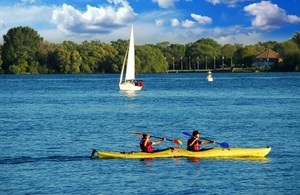
The annual watersports participation survey showed that approximately 3.9m UK adults took part in one or more of 12 core boating activities¹ in 2018, a rise of around 1.1% on the previous year, thanks in part to 2018 being the joint hottest summer on record.
This equates to a volume increase of 700,000 people with the highest participation rates for any activity coming from family groups. The number of young people and women has increased significantly in 2018.
The survey showed that canoeing was the most popular of all boating activities and that the long term growth trend of canoeing remains at a four percent year on year increase with 2.1m people going paddling at least once a year, in canoes, kayaks or stand up paddleboards.
The number of people who own boats has increased by around 800,000, since the beginning of the survey.
Guin Batten, head of strategy and development, said: "Last year we saw a small dip in the overall number of canoeist and kayakers, this was offset by an increase in the number of stand up paddleboarders, so the overall number of paddlers getting out onto the water is still growing."
The watersports participation survey is conducted annually by a consortium of leading marine bodies including British Marine, Royal Yachting Association (RYA), Maritime and Coastguard Agency (MCA), Royal National Lifeboat Institution (RNLI), British Canoeing (BC) and the Centre for Environment, Fisheries and Aquaculture Science (Cefas).
¹ 'The 12 core boating activities' covers small sail boat racing, other small sail boat activities, yacht racing, yacht cruising, power boating, general motor boating/cruising, canal boating, canoeing, rowing/sculling, windsurfing, water skiing and wakeboarding and using personal watercraft.






